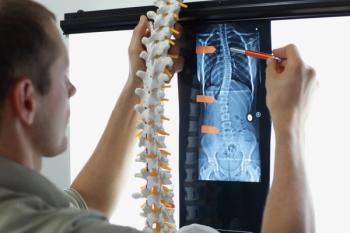
Jupiter Endovascular reports positive first-in-human study results for pulmonary embolism device
Key Takeaways
- The SPIRARE I trial demonstrated the Vertex Pulmonary Embolectomy System's safety and efficacy, with no major adverse events and improved pulmonary hemodynamics.
- TFX technology offers enhanced procedural stability and control, potentially improving cardiac function and patient outcomes in pulmonary embolism treatment.
Jupiter Endovascular's innovative TFX technology shows promise in improving outcomes for pulmonary embolism patients, enhancing safety and procedural efficiency.
The European trial enrolled 10 patients across two centers in Austria and Poland. According to investigators, the TFX technology demonstrated strong safety and performance signals, with no major adverse events reported within 48 hours and marked improvements in pulmonary hemodynamics and right heart function.
“TFX represents an entirely new way to perform endovascular interventions, overcoming the long-standing tradeoff between device access and delivery,” said Lang. “The exceptional stability and control provided by TFX have the potential to enable substantial unloading of the right heart and hemodynamic normalization.”
Key results included a 32% decrease in mean pulmonary artery pressure during the procedure and a 29% improvement in the mean right ventricle/left ventricle ratio at 48 hours. More than 80% of procedures were completed without re-crossing the heart, and no major bleeding events were observed.
Charles Love, chief science officer of Jupiter Endovascular, said the findings “provide encouraging early evidence that improved procedural stability and control enabled by TFX can translate into meaningful improvements in cardiac function and patient outcomes.”
The company will continue its evaluation of the technology in the ongoing SPIRARE II pivotal trial in both the United States and Europe.
Advances in pulmonary embolism intervention technologies
Treatment of pulmonary embolism has evolved rapidly as cardiovascular specialists seek ways to improve patient outcomes while reducing procedural risks. Traditional approaches often rely on thrombolytic drugs or mechanical clot retrieval devices, but challenges remain in balancing efficacy with safety, especially for patients with intermediate-risk disease who may not be suitable for aggressive interventions.
Recent innovations have centered on enhancing catheter control, minimizing disruption to cardiac structures, and reducing the need for adjunctive devices such as stiff guidewires. These improvements are designed to allow more precise device navigation within the pulmonary arteries, improving procedural success while limiting trauma to the heart and surrounding vasculature.
A major focus in current research is right heart function as a primary indicator of treatment success. Studies increasingly measure reductions in pulmonary artery pressure and improvements in right ventricular metrics as endpoints, reflecting a shift toward treating PE as a cardiac condition rather than solely a vascular one. This cardiac-centric approach aligns with growing recognition that long-term outcomes depend on restoring cardiopulmonary stability—not just clearing clot burden.
Additionally, device developers are placing emphasis on procedural efficiency. Systems that allow physicians to complete interventions in a single pass without re-crossing the heart or using rigid tools reduce procedural stress and improve safety profiles. Early human data has shown that these design advancements can lead to rapid improvement in symptoms such as dyspnea and overall functional recovery within days of treatment.
Looking ahead, clinical research is increasingly focused on long-term outcomes, including reducing the risk of chronic thromboembolic
Newsletter
Stay informed and empowered with Medical Economics enewsletter, delivering expert insights, financial strategies, practice management tips and technology trends — tailored for today’s physicians.














